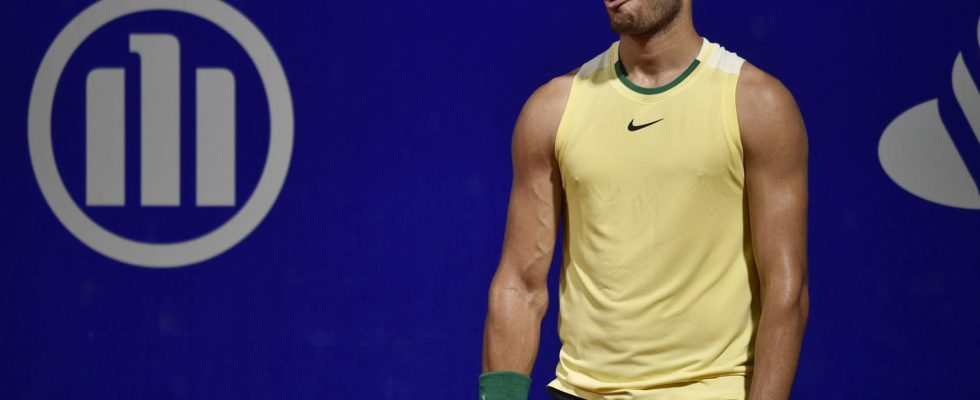The Spaniard is following in the footsteps of Rafael Nadal in the literal sense of the word. He even inherited one of his most visible faults.
At only 20 years old, Carlos Alcaraz already has a track record that speaks for him. The youngest world number 1 in history, the Spanish tennis player has already won two Grand Slam titles, one on grass at Wimbledon in 2022, the other on hard at the US Open in the United States. .
However, his record is still very far from his illustrious elder Rafael Nadal. Still on the circuit despite complicated seasons in recent years due to injuries, the 32-year-old Spaniard has 92 titles, two Olympic champion titles, 5 Davis Cups, but above all 22 Grand Slam titles including 14 Roland -Garros.
If the game of the two players is similar with incredible striking power and above all constant defense, the two men also have similarities off the field with a few knocks. For Nadal, it was part of the legend. Between each exchange, the tennis player focuses on the choice of balls, the readjustment of his shorts (or his briefs according to different opinions) and above all the position of his bottles, all aligned in a precise order, which he controls at each change of sides.
Carlos Alcaraz also has this disorder. He may be less advanced and you may not have noticed it yet while watching him play, but the little protégé of former Roland Garros winner Juan Carlos Ferrero also aligns the bottles very precisely, like Rafael Nadal, and always eats a bite of energy bar before the banana.

OCDs, or rather superstitions that don’t stop at the simple bottle of water, as Carlos Alcaraz explains for the ATP website. “Every game I have superstitions, like always picking up 5 balls, throwing them 5 times.” If you look closely, you can actually see the world number 2 before each serve bouncing the ball five times.
For RMC, Clément Le Coz, sports psychologist and mental trainer, believes that this routine put in place by athletes is a way of putting themselves in the best possible condition before a point: “The fact of setting performance routines which are although very marked, it allows you to put yourself in a sort of bubble and to psychologically settle into an optimal state of performance and concentration at each point.
Human beings need routine and a certain stability to ensure a good result. I always put in order the things that are really important, explained Rafael Nadal. “My routine before every tennis match follows the same logic. I try to train perfectly every day, it gives me confidence and gives me a bit of peace of mind knowing that things are going to go well for me or at least that I do everything I can to make things go well.”
